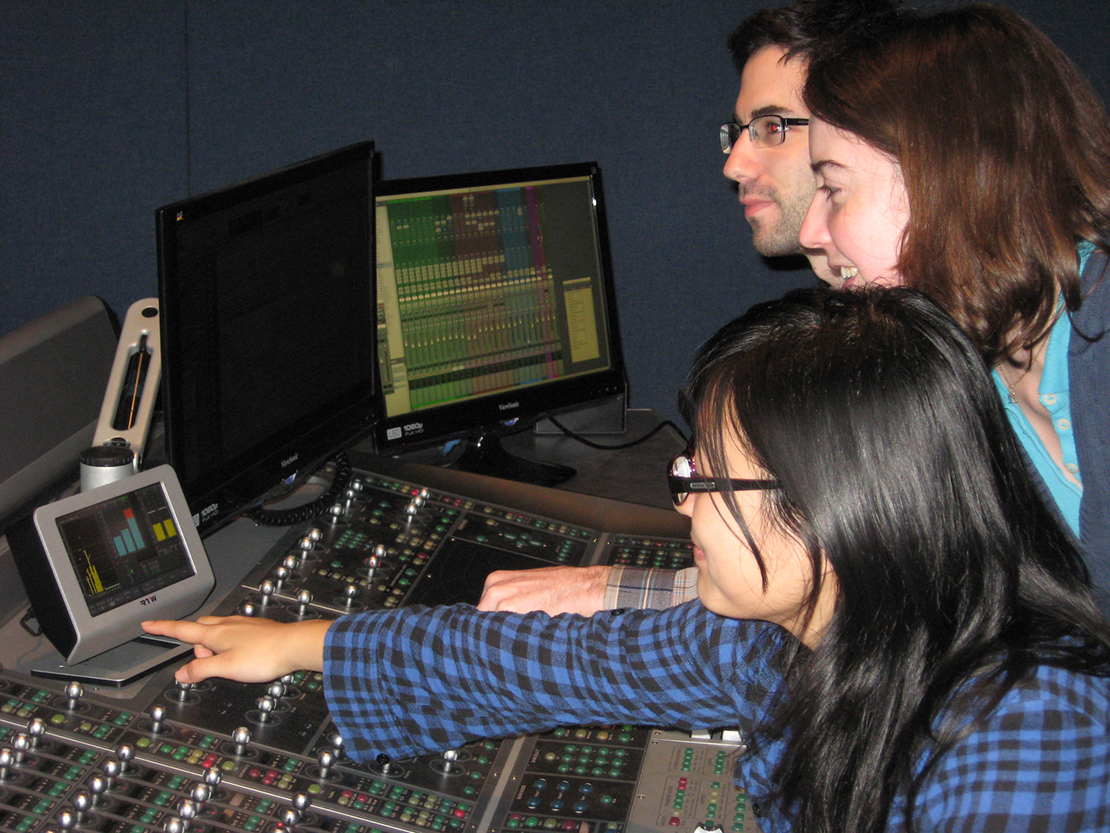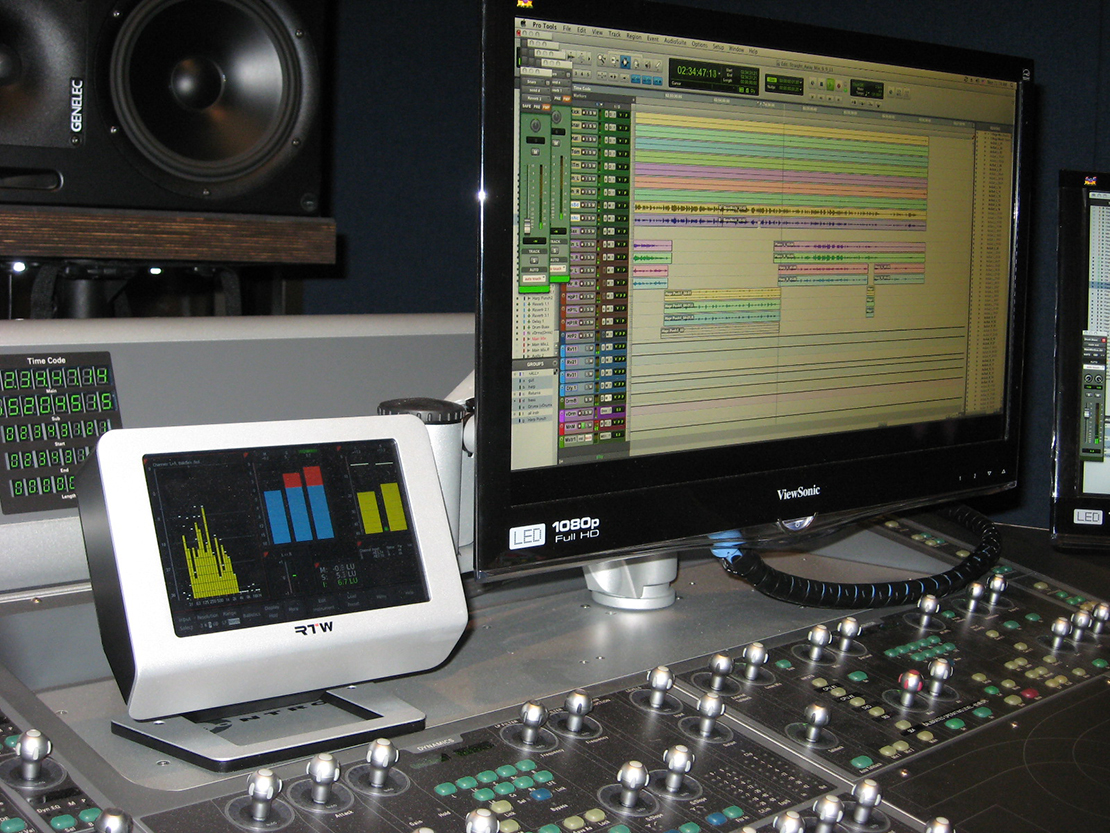TM7 TouchMonitor arrives at USC School of Cinematic Arts

April 16, 2012
TM7 TouchMonitor has been installed at the prestigious John Williams Scoring Stage at the University of California (USC) School of Cinematic Arts. The 7-inch touch-sensitive audio monitor has become an integral part of the school’s undergraduate and graduate programs, specifically for students learning about film scoring, mixing and audio post production. The innovative touchscreen capability provides a more flexible, comfortable experience for the students, most of who are accustomed to using the same touch technology on their personal electronic devices.
After spending some time with the TM7 at an NAB Show, USC’s Chief Audio Engineer Buddy Halligan knew right away that it would be part of the school’s recent redesign of the John Williams Scoring Stage. Halligan, already familiar with RTW from the positive experience he’d had with the company’s SurroundMonitor 10800X PLUS – there are five units installed in the dub stages at the School of Cinematic Arts – purchased the TM7 soon after.
“I suspected the TM7 would also be another high-quality meter,” says Halligan. “I played with it at NAB, fell in love and bought it. It’s so intuitive, the design is beautiful and it’s nice that we will be able to keep adding to it with new upgrades and software packages as our needs change. It makes for a solid investment for our school.”

The TouchMonitor’s LRA (Loudness Range) instrument, a descriptor specified in ITU-R BS.1770, which combines the two most critical loudness-metering parameters, is used extensively in USC School of Cinematic Arts’ graduate-level advanced sound, sound production and post-production film classes. In the sound production classes, for example, the students show their dailies, receive rough cuts, final cuts and then produce the final mix. The TM7’s LRA has proven to be an integral teaching tool as the students take their content through each stage of the filmmaking process. It is also used in the scoring classes in a similar way.
Halligan also likes the customization and flexibility the TM7 provides. For the faculty, it is helpful to be able to set up different pre-sets in order to cover all required topics in class. Plus, since all of the readings can be viewed simultaneously and projected onto a larger screen, all of the students can have a clear visual of what they are listening for.
“The VGA output is a great feature,” adds Halligan. “It allows us to project the meters in the classrooms so that the entire class gets a really close look at what is going on with the various parameters and meters. They can easily see the phase relationship, RTA, the overall level peaks, dialogue, normalization – everything they need to understand the bigger picture.”

“We are honored that a school with such a stellar reputation as that of the USC School of Cinematic Arts chose RTW’s state-of-the-art products for its students,” says Andreas Tweitmann, CEO, RTW. “These students are the future of the film industry and we are sure that the TouchMonitor is the perfect tool for meeting today and tomorrow’s challenges in audio metering. It is a wonderful opportunity for them to be using the same tools in the classroom that they will find in many production studios around the world.”
Learn more about TM7.
